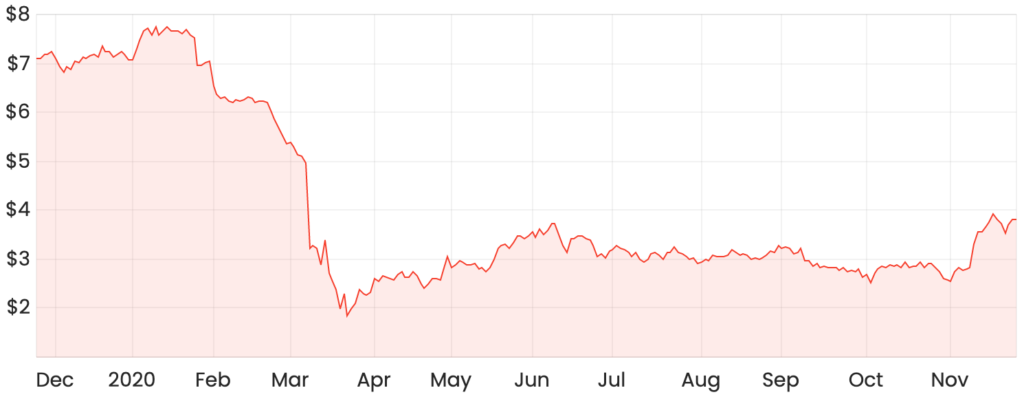The Oil Search Ltd (ASX: OSH) share price has surged around 30% in the last month.
Despite these gains, the OSH share price is still 46% lower since the beginning of the year. Is there potential for Oil Search shares to continue rising?
OSH share price chart

About Oil Search
Oil Search is the largest oil and gas exploration and development company in Papua New Guinea. The company also owns a number of leases in Alaska with production expected to commence in 2025.
According to Oil Search’s recent November investment briefing, the company currently produces 28.5 MMboe per annum. MMboe stands for one million barrels of oil equivalent. A barrel of oil contains 42 US gallons or 159 litres. Therefore, this translates to about 4.53 billion litres of oil!
Why has the Oil Search share price improved?
Oil Search released third-quarter numbers on 20 October 2020. Total production and sales jumped 7.2% and 16.7%, respectively, from Q3 2019 to 7.3 MMboe and 7.55 MMboe. However, revenue dropped 47.6% to US$189 million.
Oil Search’s Managing Director Keiran Wulff explained that revenue fell “despite improved oil prices during the quarter”, due to the impact of the “two-to-three month lag on LNG contract pricing and a higher portion of LNG spot sales”.
Clearly, the fortunes of Oil Search is closely linked to the price of oil. In the last month, the price of oil (Brent) has rocketed from US$41 to over US$48 a barrel.
The increase has occurred on the back of positive COVID-19 vaccine news from companies such as Pfizer and Moderna. The market is likely factoring in the re-opening of global economies triggering an increased demand for oil and gas.
The oil price will also be impacted by the upcoming OPEC+ meeting scheduled for 30 November 2020. OPEC+ stands for the Organization of the Petroleum Exporting Countries.
Are Oil Search shares cheap?
To get an idea if Oil Search shares could be undervalued, we can look at forecasts presented by the company.
Last week, Oil Search released a “Strategy Update and Investor Briefing” in which management presented forecasts for future oil production and free cash flows. Oil Search detailed it is targeting oil and gas production of 50+ MMboe by 2028-2030 and free cash flow (FCF) of between US$1.5 billion and $2 billion.
A required free cash flow yield can be applied to the 2030 free cash flow guidance to generate a rough 2030 share price target. To calculate this target, I will assume Oil Search achieves the midpoint of its FCF guidance of US$1.75 billion.
The formula for free cash flow yield is as follows: Free cashflow yield = free cash flow divided by market capitalisation.
Re-arranging the formula, market capitalisation = free cash flow divided by free cash flow yield.
Inputting the assumed US$1.75 billion of free cash flow and a 10% free cash flow yield, I get a market capitalisation of US$17.5 billion.
At the current US/AUD exchange rate, this equals around A$23.8 billion. This is roughly triple today’s market capitalisation of $7.9 billion.
In theory, it seems like there is huge upside. However, I would want to dig into all underlying assumptions before buying shares.








